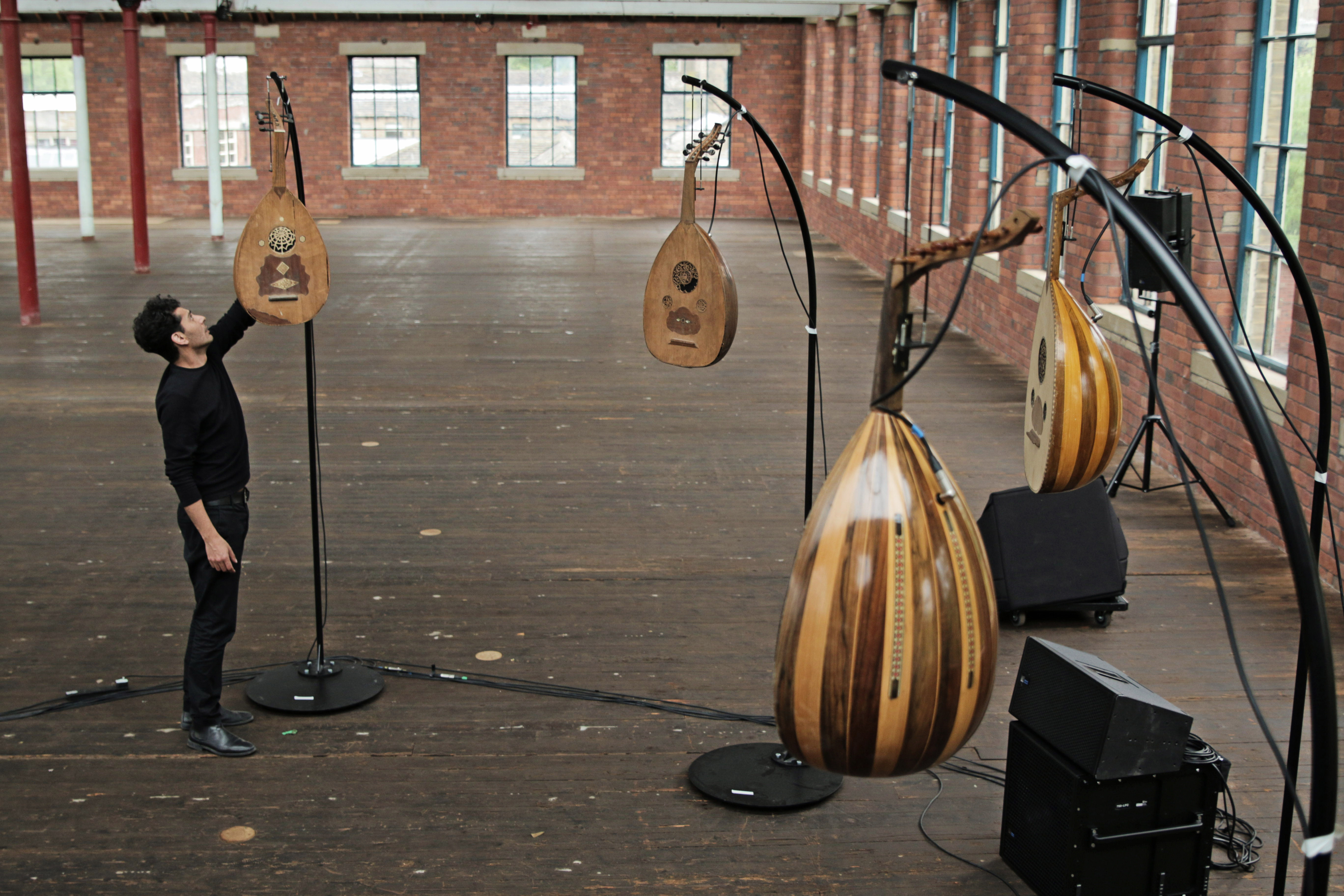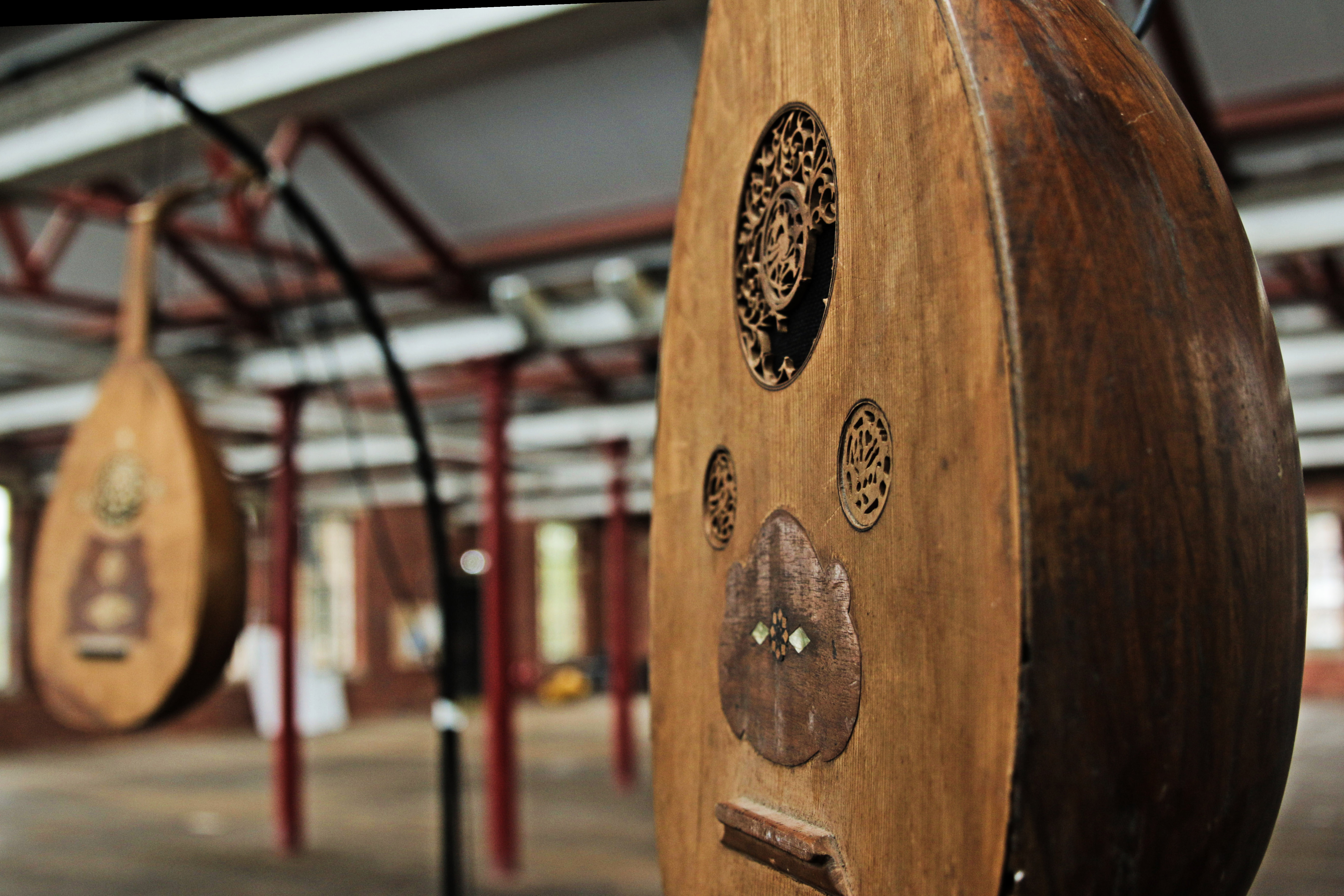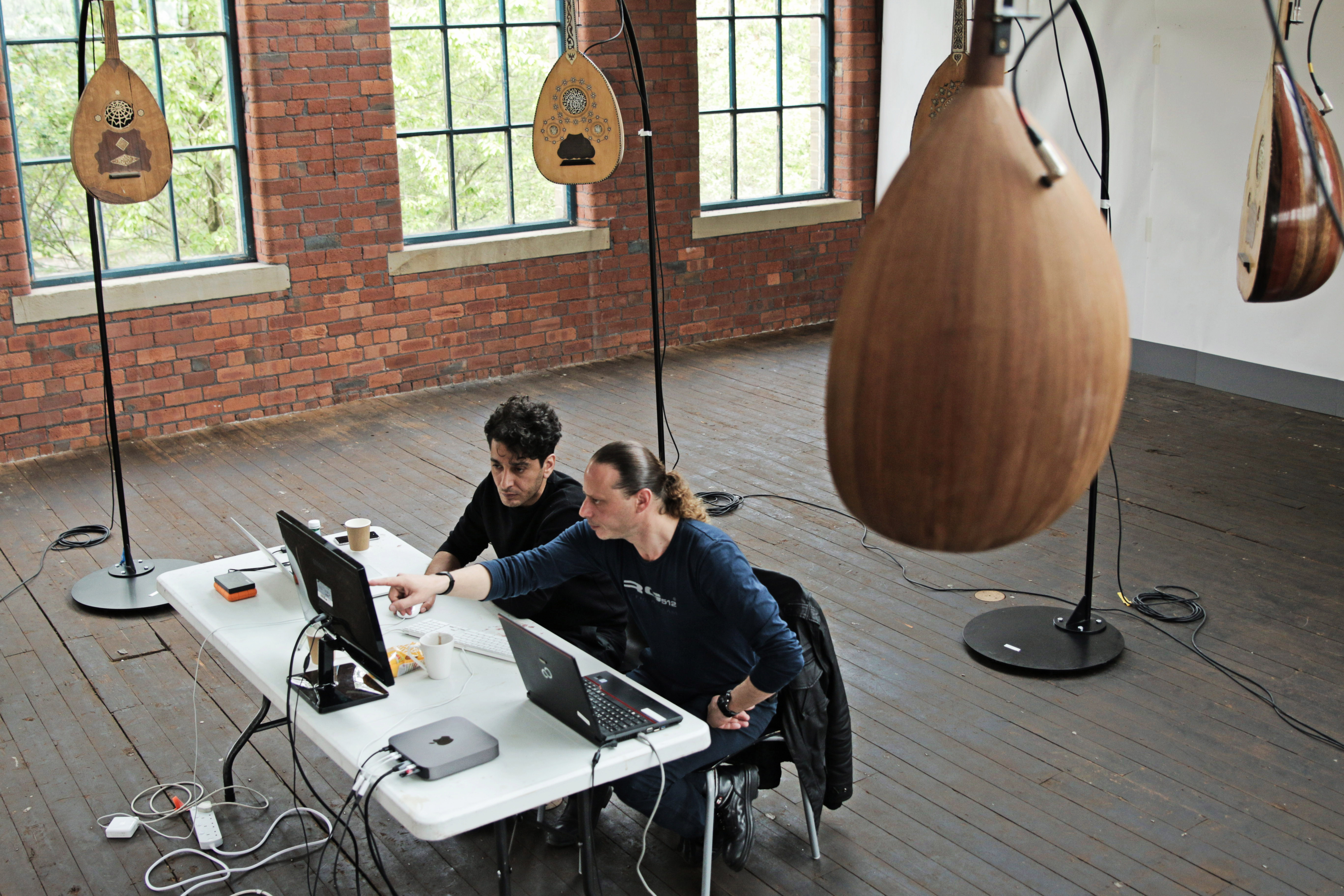Requiem for the 21st Century

“Haunting and mesmeric” - The Guardian
The Installation
Commissioned by Opera North for the PRS Foundation’s New Music Biennial, “Requiem for the 21st Century” is a multi-channel sound installation and generative composition that takes it’s inspiration from a 9th century myth about the origin of the Oud.
It will premier in the UK on 5-7 July at the Southbank Centre in London and 12-14 July at the Humber Street Gallery in Hull.
According to Mufaḍḍal ibn Salamah (d. 971 AD) - who himself refers to Hishām ibn al-Kullā - the oud was created by Lamech, a descendent of Cane, the son of Adam.
As presented by Ibn Salamah*, the story says that “Lamech was of old age and never had a son, leading him to marry 50 wives and have 200 affairs until finally a son was born to him only 10 years before he died. When his son reached five years of age, he died, and Lamech became incredibly distressed. So much so, that he hung the corpse of his dead son on a tree and said: I will not let this body out of my sight unless it falls to pieces or I die. As the body began to decompose, it began to fall from the tree until all that was left was the thigh, the leg, the foot and the toes.
And so Lamech took some wood which he cut and made thin, and began to assemble it together. He made its body in the shape of the thigh, its neck in the shape of the leg and its headstock as shape of the foot and the keys in the shape of the toes. He then stretched strings across it as the veins, and began to play it and cry and lamented until he went blind. It is said he was the first who ever lamented, and after him the instrument was called oud (Arabic for wood) because it was made from wood.”
Khyam Allami uses this myth, in which the instrument is both born of death and used to commemorate death, as the basis for Requiem for the 21st Century.
To create the installation, Allami searched for old ouds in various states of decay in Beirut. These were shipped to the UK and fitted with speakers by carefully taking the instruments’ faces off and putting them back together again. Hanging from stands in a circular formation, the instruments reference the body of Lamech’s son and become the source of the requiem.

The Music
“Two principles have defined my musical path since the turn of the Century: tuning and modality. The various tuning systems used across the world are a fundamental part of their musical and cultural identity – nuanced foundations upon which all else is built. And the modal systems created from subsets of these tunings are their pathways of musical expression, each mode engaging an articulated emotional state depending on how its microtonal intervals are used, and most importantly, when.” Khyam Allami – The Wire magazine (Issue 425, July 2019)
The composition is based on the maqām system of Arabic, and more widely Middle Eastern, Central Asian and North African musics. It uses a microtonal tuning system devised by the 10th century philosopher, mathematician and cosmologist Al-Farabi (c. 872 - c. 950), in which the octave is divided into 22 unequal notes, unlike the 12 equal divisions of the modern western musical octave.
From this tuning, Khyam Allami mapped variations of 24 core maqāmāt (modes) to generate over 150 possibilities. Working with members of the Opera North orchestra and chorus, Allami asked the musicians to perform each of the 22 notes separately in different octaves. He also recorded the same on the oud.
These recordings were then fed into a custom-coded software, programmed in collaboration with Arnaud Mercier. Using this software, Allami creates a series of states which the installation moves through over time, generating sonic material from the acoustically recorded performances in near-endless possible combinations of maqāmāt, sounds and silence.
Conceived as a powerful, ever-changing requiem for the troubled 21st century, it offers each visitor a moment to contemplate our millennium so far, and its possible futures, while commemorating those we have lost.

Credits and thanks
Commissioned and Produced by Opera North Projects for the PRS Foundation’s New Music Biennial 2019 in partnership with Southbank Centre, London and Absolutely Cultured, Hull.
Composed by Khyam Allami
Technical direction and MAX/MSP programming by Arnaud Mercier
Ouds: Khyam Allami
Voices: Members of the Chorus of Opera North
Violins, violas, cellos, basses: Members of the Orchestra of Opera North
System Designer: Arnaud Mercier
Acoustic Design: Igor Borovik
Production Manager: Jane Earnshaw
Technical Manager: Jamie Saye
Producer: Jo Nockels
Assistant Producer: Kathryn Gasic
Carpentry: Chris Tribe
Metalwork: Ralph Tricker
Khyam Allami would like to thank Alya Karame, Sarah Nohra, Eliane Abou Jaoude, Rouba Mhaissen and Albert Mansour for their kind donations of ouds for this installation.
Dates
05-07 Jul 2019 - Weekend installation, Southbank Centre, Spirit Level Gallery, London, UK
17:30 • 06 Jul 2019 - Q&A and listening session with the artist, Southbank Centre, Spirit Level Gallery, London, UK
12-14 Jul 2019 - Humber Street Gallery, Hull, UK
14:15 • 13 Jul 2019 - Q&A and installation with the artist, Humber Street Gallery, Hull, UK
-------
* Abi Ṭaleb Al-Mufaḍḍal Bin Salāmah Al-Naḥawī Al-Lughawī, "Kitāb Al-Malāhī wa-Asmāʼihā min Qibal Al-Mūsīqa”, Al-Hayʼah Al-Miṣrīyah Al-ʻĀmmah lil-Kitāb, Cairo, 1984.
Original Arabic text:
ذكر هشام بن الكلّى أنّ أول من عمل العود فضرب به رجل من بني قابيل، ويقال: قايين بن آدم، يقال له: لامك، وكان عمّر زمانا طويلاً، ولم يكن يولد لهُ، فتزوّج خمسين امرأة وتسرّى بمائتي سريّة [...] ثم ولد له غلام قبل أن يموت بعشر سنين، فاشتد فرحه، فلما أتت على الغلام خمس سنين مات، فجزع عليه جزعًا شديدًا، فأخذه فعلّقه على شجرة، فقال: لا تذهب صورته عن عيني حتى يتقطّع أشلاء أو أموت، فجعل لحمه يقع عن عظامه حتى بقيت الفخذ بالساق والقدم والأصابع، فأخذ عودًا فشقّه ورقّقه وجعل يؤلف بعضه على بعض، فجعل صدره على صورة الفخذ، والعنق على صورة الساق، والإبريق على قدر القدم، والملاوي كالأصابع، وعلّق عليه أوتارًا كالعروق، ثم جعل يضرب به ويبكي وينوح حتى عمي، فكان أول من ناح، وسمّى الذي اتّخذ: عودًا، لأنه اتُخذ من عود
أبى طالب المفضّل بن سلمة النّحوي اللغوي المتوفي سنة ٣٩٠ هجري
كتاب الملاهي وأسمائها من قبل الموسيقى ص١٣-١٤
الهيئة المصريّة العامّة للكتاب، القاهرة، مصر، ١٩٨٤
أبى طالب المفضّل بن سلمة النّحوي اللغوي المتوفي سنة ٣٩٠ هجري
كتاب الملاهي وأسمائها من قبل الموسيقى ص١٣-١٤
الهيئة المصريّة العامّة للكتاب، القاهرة، مصر، ١٩٨٤